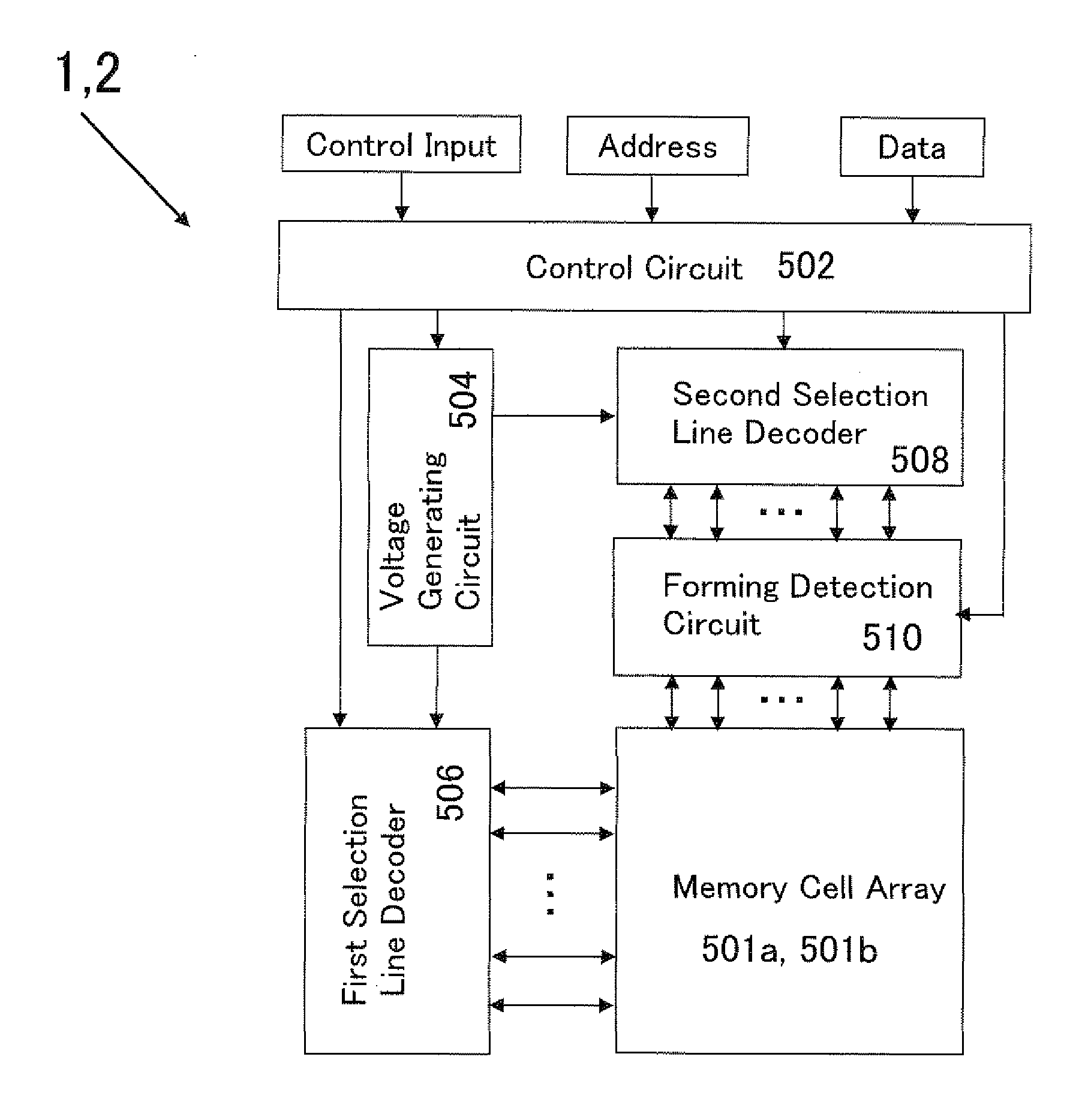Control circuit for forming process on nonvolatile variable resistive element and control method for forming process
a technology of resistive element and control circuit, which is applied in the direction of digital storage, instruments, semiconductor devices, etc., can solve the problems far from realizing the ideal of universal memory, and achieve the effect of shortening the forming tim
- Summary
- Abstract
- Description
- Claims
- Application Information
AI Technical Summary
Benefits of technology
Problems solved by technology
Method used
Image
Examples
first embodiment
[0044]FIG. 5 is a circuit diagram showing the configuration of the nonvolatile semiconductor memory device (hereinafter referred to as “device 1 of the present invention”) according to an embodiment of the present invention. The present memory device is formed of a memory cell array 501a, a control circuit 502, a voltage generating circuit 504, a first selection line decoder 506, a second selection line decoder 508 and a forming detection circuit 510.
[0045]The memory cell array 501a is shown in the equivalent circuit diagram of FIG. 3, and has memory cells including a nonvolatile variable resistive element and a selection transistor that are aligned in a matrix. Here, the nonvolatile variable resistive elements are nonvolatile variable resistive elements with two terminals having electrodes at both ends of a variable resistor, and electrical stress is applied across the two terminals of the nonvolatile variable resistive elements when a forming process is carried out, so that the va...
second embodiment
[0068]The nonvolatile semiconductor memory device according to another embodiment of the present invention (hereinafter referred to as “device 2 of the present invention”) has the structure shown in the circuit diagram in FIG. 5, as does the device 1 of the present invention according to the first embodiment, but the structure of the memory cell array is different from that in the device 1 of the present invention. The device 3 of the present invention is formed of a memory cell array 501b, a control circuit 502, a voltage generating circuit 504, a first selection line decoder 506, a second selection line decoder 508 and a forming detection circuit 510, and the structure and operation of the control circuit 502, the voltage generating circuit 504 and the forming detection circuit 510 are exactly the same as in the device 1 of the present invention, and therefore, the descriptions are not repeated.
[0069]The memory cell array 501b is shown in the equivalent circuit diagram in FIG. 10,...
PUM
 Login to View More
Login to View More Abstract
Description
Claims
Application Information
 Login to View More
Login to View More - R&D
- Intellectual Property
- Life Sciences
- Materials
- Tech Scout
- Unparalleled Data Quality
- Higher Quality Content
- 60% Fewer Hallucinations
Browse by: Latest US Patents, China's latest patents, Technical Efficacy Thesaurus, Application Domain, Technology Topic, Popular Technical Reports.
© 2025 PatSnap. All rights reserved.Legal|Privacy policy|Modern Slavery Act Transparency Statement|Sitemap|About US| Contact US: help@patsnap.com



